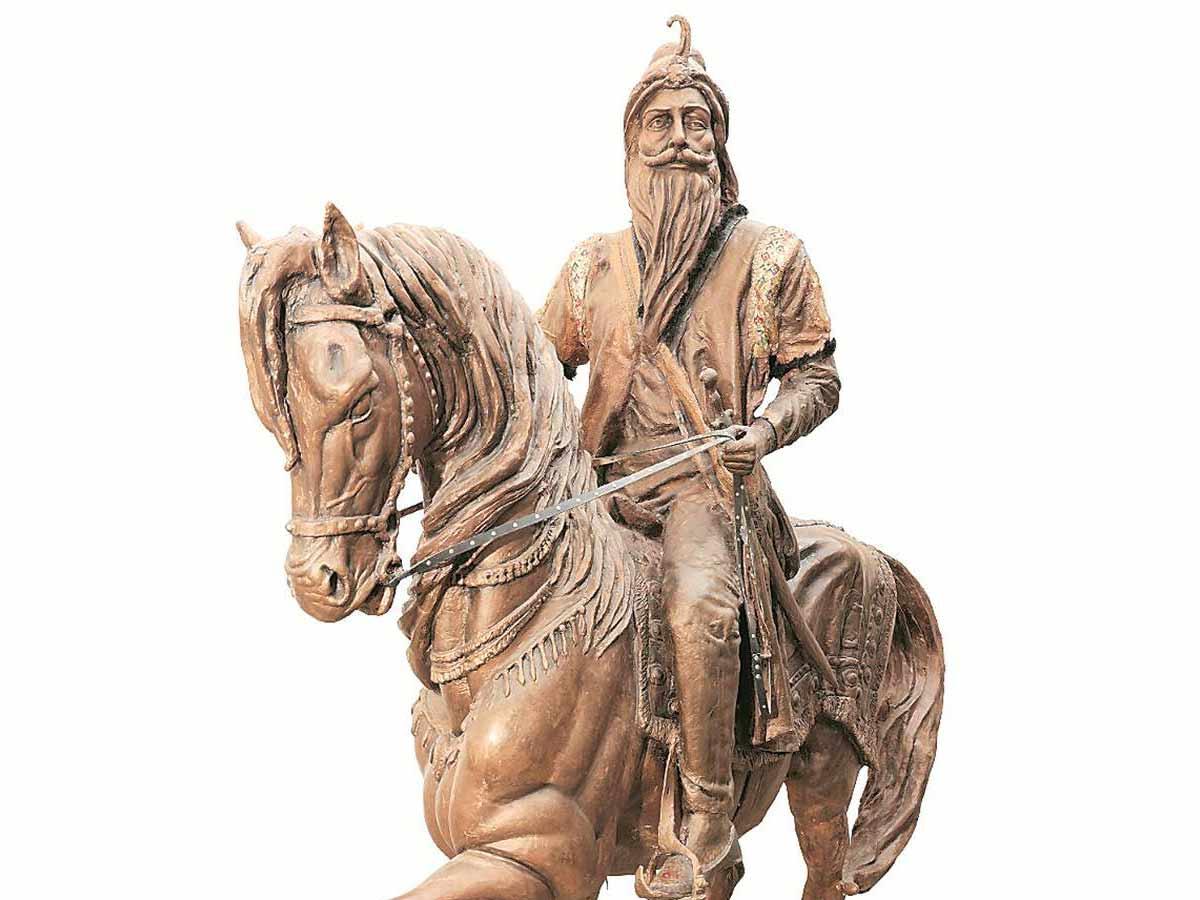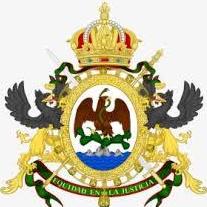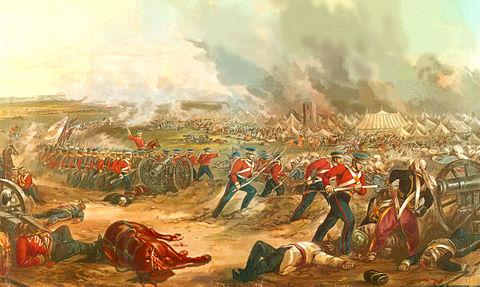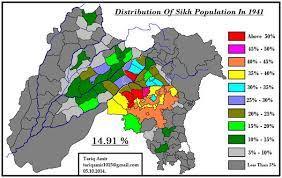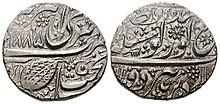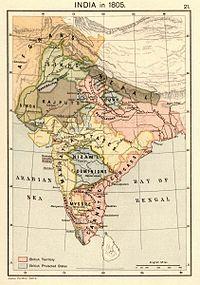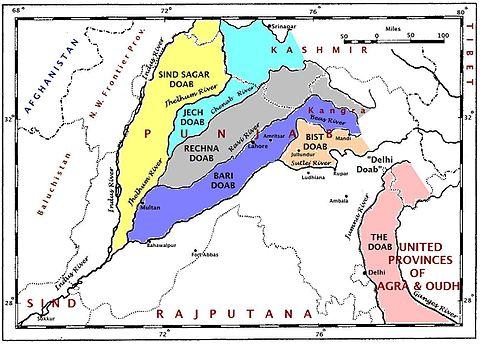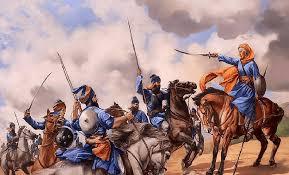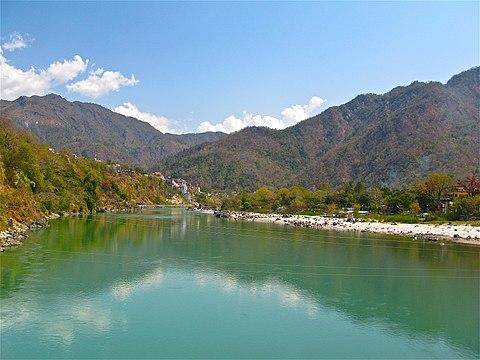-
3 pessoas curtiram isso
-
0 Publicações
-
0 fotos
-
0 Vídeos
-
History and Facts
© 2025 Omaada - A global social and professionals networking platform
 Portuguese
Portuguese
Atualizações Recentes
-
Timeline Sikh Empire:
1699: Formation of the Khalsa by Guru Gobind Singh.1710–1716: Banda Singh defeats the Mughals and declares Khalsa rule.1716–1738: Turbulence, no real ruler; Mughals take back the control for two decades but Sikhs engage in guerrilla warfare. 1733–1735: The Khalsa accepts, only to reject, the confederal status given by the Mughals. 1748–1757: Afghan invasion of Ahmad Shah Durrani. 1761–1767: Recapture of Punjab region by Afghan in Third Battle of Panipat. 1763–1774: Charat Singh Sukerchakia, Misldar of Sukerchakia misl, establishes himself in Gujranwala. 1764–1783: Baba Baghel Singh, Misldar of Singh Krora Misl, imposes taxes on the Mughals. 1783: Sikh capture of Delhi and the Red Fort from the Mughals. 1773: Ahmad Shah Durrani dies and his son Timur Shah launches several invasions into Punjab. 1774–1790: Maha Singh becomes Misldar of the Sukerchakia misl.
1790–1801: Ranjit Singh becomes Misldar of the Sukerchakia misl. 1799, formation of the Sikh Khalsa Army. 12 April 1801 (coronation) – 27 June 1839: reign of Maharaja Ranjit Singh.
1 June 1813: Ranjit Singh is given the Kohinoor Diamond. 13 July 1813: Battle of Attock, the Sikh Empire's first significant victory over the Durrani Empire. March – 2 June 1818: Battle of Multan, the 2nd battle in the Afghan–Sikh wars. 3 July 1819: Battle of Shopian. 14 March 1823: Battle of Nowshera. 30 April 1837: Battle of Jamrud. 27 June 1839 – 5 November 1840: Reign of Maharaja Kharak Singh. 5 November 1840 – 18 January 1841: Chand Kaur is briefly Regent. 18 January 1841 – 15 September 1843: Reign of Maharaja Sher Singh. May 1841 – August 1842: Sino-Sikh war. 15 September 1843 – 31 March 1849: Reign of Maharaja Duleep Singh. 1845–1846: First Anglo-Sikh War. 1848–1849: Second Anglo-Sikh War.
Timeline Sikh Empire: 1699: Formation of the Khalsa by Guru Gobind Singh.1710–1716: Banda Singh defeats the Mughals and declares Khalsa rule.1716–1738: Turbulence, no real ruler; Mughals take back the control for two decades but Sikhs engage in guerrilla warfare. 1733–1735: The Khalsa accepts, only to reject, the confederal status given by the Mughals. 1748–1757: Afghan invasion of Ahmad Shah Durrani. 1761–1767: Recapture of Punjab region by Afghan in Third Battle of Panipat. 1763–1774: Charat Singh Sukerchakia, Misldar of Sukerchakia misl, establishes himself in Gujranwala. 1764–1783: Baba Baghel Singh, Misldar of Singh Krora Misl, imposes taxes on the Mughals. 1783: Sikh capture of Delhi and the Red Fort from the Mughals. 1773: Ahmad Shah Durrani dies and his son Timur Shah launches several invasions into Punjab. 1774–1790: Maha Singh becomes Misldar of the Sukerchakia misl. 1790–1801: Ranjit Singh becomes Misldar of the Sukerchakia misl. 1799, formation of the Sikh Khalsa Army. 12 April 1801 (coronation) – 27 June 1839: reign of Maharaja Ranjit Singh. 1 June 1813: Ranjit Singh is given the Kohinoor Diamond. 13 July 1813: Battle of Attock, the Sikh Empire's first significant victory over the Durrani Empire. March – 2 June 1818: Battle of Multan, the 2nd battle in the Afghan–Sikh wars. 3 July 1819: Battle of Shopian. 14 March 1823: Battle of Nowshera. 30 April 1837: Battle of Jamrud. 27 June 1839 – 5 November 1840: Reign of Maharaja Kharak Singh. 5 November 1840 – 18 January 1841: Chand Kaur is briefly Regent. 18 January 1841 – 15 September 1843: Reign of Maharaja Sher Singh. May 1841 – August 1842: Sino-Sikh war. 15 September 1843 – 31 March 1849: Reign of Maharaja Duleep Singh. 1845–1846: First Anglo-Sikh War. 1848–1849: Second Anglo-Sikh War.0 Comentários 0 Compartilhamentos 0 AnteriorFaça Login para curtir, compartilhar e comentar! -
Decline:
After Ranjit Singh's death in 1839, the empire was severely weakened by internal divisions and political mismanagement. This opportunity was used by the British East India Company to launch the First Anglo-Sikh War.
The Battle of Ferozeshah in 1845 marked many turning points, the British encountered the Punjab Army, opening with a ***-duel in which the Sikhs "had the better of the British artillery". As the British made advances, Europeans in their army were specially targeted, as the Sikhs believed if the army "became demoralized, the backbone of the enemy's position would be broken". The fighting continued throughout the night. The British position "grew graver as the night wore on", and "suffered terrible casualties with every single member of the Governor General's staff either killed or wounded". Nevertheless, the British army took and held Ferozeshah. British General Sir James Hope Grant recorded: "Truly the night was one of gloom and forbidding and perhaps never in the annals of warfare has a British Army on such a large scale been nearer to a defeat which would have involved annihilation."
The reasons for the withdrawal of the Sikhs from Ferozeshah are contentious. Some believe that it was treachery of the non-Sikh high command of their own army which led to them marching away from a British force in a precarious and battered state. Others believe that a tactical withdrawal was the best policy.[citation needed]
The Sikh empire was finally dissolved at the end of the Second Anglo-Sikh War in 1849 into separate princely states and the British province of Punjab. Eventually, a Lieutenant Governorship was formed in Lahore as a direct representative of the British Crown.Decline: After Ranjit Singh's death in 1839, the empire was severely weakened by internal divisions and political mismanagement. This opportunity was used by the British East India Company to launch the First Anglo-Sikh War. The Battle of Ferozeshah in 1845 marked many turning points, the British encountered the Punjab Army, opening with a gun-duel in which the Sikhs "had the better of the British artillery". As the British made advances, Europeans in their army were specially targeted, as the Sikhs believed if the army "became demoralized, the backbone of the enemy's position would be broken". The fighting continued throughout the night. The British position "grew graver as the night wore on", and "suffered terrible casualties with every single member of the Governor General's staff either killed or wounded". Nevertheless, the British army took and held Ferozeshah. British General Sir James Hope Grant recorded: "Truly the night was one of gloom and forbidding and perhaps never in the annals of warfare has a British Army on such a large scale been nearer to a defeat which would have involved annihilation." The reasons for the withdrawal of the Sikhs from Ferozeshah are contentious. Some believe that it was treachery of the non-Sikh high command of their own army which led to them marching away from a British force in a precarious and battered state. Others believe that a tactical withdrawal was the best policy.[citation needed] The Sikh empire was finally dissolved at the end of the Second Anglo-Sikh War in 1849 into separate princely states and the British province of Punjab. Eventually, a Lieutenant Governorship was formed in Lahore as a direct representative of the British Crown.0 Comentários 0 Compartilhamentos 0 Anterior -
Demography:
The population of Khalsa empire during the time of Ranjit Singh’s rule was estimated to be around 12 million people.There were 8.4 million Muslims, 2.88 million Hindus and 722,000 Sikhs.Demography: The population of Khalsa empire during the time of Ranjit Singh’s rule was estimated to be around 12 million people.There were 8.4 million Muslims, 2.88 million Hindus and 722,000 Sikhs.0 Comentários 0 Compartilhamentos 0 Anterior -
Sikh Policy:
The Sikh Empire was idiosyncratic in that it allowed men from religions other than their own to rise to commanding positions of authority.
The Fakir brothers were trusted personal advisors and assistants as well as close friends to Ranjit Singh, particularly Fakir Azizuddin, who would serve in the positions of foreign minister of the empire and translator for the maharaja, and played important roles in such important events as the negotiations with the British, during which he convinced Ranjit Singh to maintain diplomatic ties with the British and not to go to war with them in 1808, as British troops were moved along the Sutlej in pursuance of the British policy of confining Ranjit Singh to the north of the river, and setting the Sutlej as the dividing boundary between the Sikh and British empires; negotiating with Dost Muhammad Khan during his unsuccessful attempt to retake Peshawar, and ensuring the succession of the throne during the maharaja's last days in addition to caretaking after a stroke, as well as occasional military assignments throughout his career. The Fakir brothers were introduced to the maharaja when their father, Ghulam Muhiuddin, a physician, was summoned by him to treat an eye ailment soon after his capture of Lahore.
The other Fakir brothers were Imamuddin, one of his principal administration officers, and Nuruddin, who served as home minister and personal physician, were also granted jagirs by the Maharaja.
Every year, while at Amritsar, Ranjit Singh visited shrines of holy people of other faiths, including several Muslim saints, which did not offend even the most religious Sikhs of his administration. As relayed by Fakir Nuruddin, orders were issued to treat people of all faith groups, occupations,and social levels equally and in accordance with the doctrines of their faith, per the Shastras and the Quran, as well as local authorities like judges and panches (local elder councils), as well as banning forcible possession of others' land or of inhabited houses to be demolished. There were special courts for Muslims which ruled in accordance to Muslim law in personal matters, and common courts preceded over by judicial officers which administered justice under the customary law of the districts and socio-ethnic groups, and were open to all who wanted to be governed by customary religious law, whether Hindu, Sikh, or Muslim.
One of Ranjit Singh's first acts after the 1799 capture of Lahore was to revive the offices of the hereditary Qazis and Muftis which had been prevalent in Mughal times. Kazi Nizamuddin was appointed to decide marital issues among Muslims, while Muftis Mohammad Shahpuri and Sadulla Chishti were entrusted with powers to draw up title-deeds relating to transfers of immovable property. The old mohalladari[definition needed] system was reintroduced with each mahallah, or neighborhood subdivision, placed under the charge of one of its members. The office of Kotwal, or prefect of police, was conferred upon a Muslim, Imam Bakhsh.
Generals were also drawn from a variety of communities, along with prominent Sikh generals like Hari Singh Nalwa, Fateh Singh Dullewalia, Nihal Singh Atariwala, Chattar Singh Attariwalla, and Fateh Singh Kalianwala; Hindu generals included Dewan Mokham Chand Nayyar, his son, and his grandson, and Misr Diwan Chand Nayyar; and Muslim generals included Ilahi Bakhsh and Mian Ghaus Khan; one general, Balbhadra Kunwar, was a Nepalese Gurkha, and European generals included Jean-Francois Allard, Jean-Baptiste Ventura, and Paolo Avitabile. other notable generals of the Sikh Khalsa Army were Veer Singh Dhillon, Sham Singh Attariwala, Mahan Singh Mirpuri, and Zorawar Singh Kahluria, among others.
The appointment of key posts in public offices was based on merit and loyalty, regardless of the social group or religion of the appointees, both in and around the court, and in higher as well as lower posts. Key posts in the civil and military administration were held by members of communities from all over the empire and beyond, including Sikhs, Muslims, Khatris, Brahmins, Dogras, Rajputs, Pashtuns, Europeans, and Americans, among others, and worked their way up the hierarchy to attain merit. Dhian Singh, the prime minister, was a Dogra, whose brothers Gulab Singh and Suchet Singh served in the high-ranking administrative and military posts, respectively. Brahmins like finance minister Raja Dina Nath, Sahib Dyal, and others also served in financial capacities.
Muslims in prominent positions included the Fakir brothers, Kazi Nizamuddin, and Mufti Muhammad Shah, among others. Among the top-ranking Muslim officers there were two ministers, one governor and several district officers; there were 41 high-ranking Muslim officers in the army, including two generals and several colonels, and 92 Muslims were senior officers in the police, judiciary, legal department and supply and store departments. In artillery Muslims represented over 50% of the numbers while the cavalry had some 10% Muslims from among the troopers.
Thus, the government was run by an elite corps drawn from many communities, giving the empire the character of a secular system of government, even when built on theocratic foundations.
A ban on cow slaughter, which can be related to Hindu sentiments, was universally imposed in the Sarkar Khalsaji. Ranjit Singh also donated large amounts of gold for the plating of the Kashi Vishwanath Temple's dome.Sikh Policy: The Sikh Empire was idiosyncratic in that it allowed men from religions other than their own to rise to commanding positions of authority. The Fakir brothers were trusted personal advisors and assistants as well as close friends to Ranjit Singh, particularly Fakir Azizuddin, who would serve in the positions of foreign minister of the empire and translator for the maharaja, and played important roles in such important events as the negotiations with the British, during which he convinced Ranjit Singh to maintain diplomatic ties with the British and not to go to war with them in 1808, as British troops were moved along the Sutlej in pursuance of the British policy of confining Ranjit Singh to the north of the river, and setting the Sutlej as the dividing boundary between the Sikh and British empires; negotiating with Dost Muhammad Khan during his unsuccessful attempt to retake Peshawar, and ensuring the succession of the throne during the maharaja's last days in addition to caretaking after a stroke, as well as occasional military assignments throughout his career. The Fakir brothers were introduced to the maharaja when their father, Ghulam Muhiuddin, a physician, was summoned by him to treat an eye ailment soon after his capture of Lahore. The other Fakir brothers were Imamuddin, one of his principal administration officers, and Nuruddin, who served as home minister and personal physician, were also granted jagirs by the Maharaja. Every year, while at Amritsar, Ranjit Singh visited shrines of holy people of other faiths, including several Muslim saints, which did not offend even the most religious Sikhs of his administration. As relayed by Fakir Nuruddin, orders were issued to treat people of all faith groups, occupations,and social levels equally and in accordance with the doctrines of their faith, per the Shastras and the Quran, as well as local authorities like judges and panches (local elder councils), as well as banning forcible possession of others' land or of inhabited houses to be demolished. There were special courts for Muslims which ruled in accordance to Muslim law in personal matters, and common courts preceded over by judicial officers which administered justice under the customary law of the districts and socio-ethnic groups, and were open to all who wanted to be governed by customary religious law, whether Hindu, Sikh, or Muslim. One of Ranjit Singh's first acts after the 1799 capture of Lahore was to revive the offices of the hereditary Qazis and Muftis which had been prevalent in Mughal times. Kazi Nizamuddin was appointed to decide marital issues among Muslims, while Muftis Mohammad Shahpuri and Sadulla Chishti were entrusted with powers to draw up title-deeds relating to transfers of immovable property. The old mohalladari[definition needed] system was reintroduced with each mahallah, or neighborhood subdivision, placed under the charge of one of its members. The office of Kotwal, or prefect of police, was conferred upon a Muslim, Imam Bakhsh. Generals were also drawn from a variety of communities, along with prominent Sikh generals like Hari Singh Nalwa, Fateh Singh Dullewalia, Nihal Singh Atariwala, Chattar Singh Attariwalla, and Fateh Singh Kalianwala; Hindu generals included Dewan Mokham Chand Nayyar, his son, and his grandson, and Misr Diwan Chand Nayyar; and Muslim generals included Ilahi Bakhsh and Mian Ghaus Khan; one general, Balbhadra Kunwar, was a Nepalese Gurkha, and European generals included Jean-Francois Allard, Jean-Baptiste Ventura, and Paolo Avitabile. other notable generals of the Sikh Khalsa Army were Veer Singh Dhillon, Sham Singh Attariwala, Mahan Singh Mirpuri, and Zorawar Singh Kahluria, among others. The appointment of key posts in public offices was based on merit and loyalty, regardless of the social group or religion of the appointees, both in and around the court, and in higher as well as lower posts. Key posts in the civil and military administration were held by members of communities from all over the empire and beyond, including Sikhs, Muslims, Khatris, Brahmins, Dogras, Rajputs, Pashtuns, Europeans, and Americans, among others, and worked their way up the hierarchy to attain merit. Dhian Singh, the prime minister, was a Dogra, whose brothers Gulab Singh and Suchet Singh served in the high-ranking administrative and military posts, respectively. Brahmins like finance minister Raja Dina Nath, Sahib Dyal, and others also served in financial capacities. Muslims in prominent positions included the Fakir brothers, Kazi Nizamuddin, and Mufti Muhammad Shah, among others. Among the top-ranking Muslim officers there were two ministers, one governor and several district officers; there were 41 high-ranking Muslim officers in the army, including two generals and several colonels, and 92 Muslims were senior officers in the police, judiciary, legal department and supply and store departments. In artillery Muslims represented over 50% of the numbers while the cavalry had some 10% Muslims from among the troopers. Thus, the government was run by an elite corps drawn from many communities, giving the empire the character of a secular system of government, even when built on theocratic foundations. A ban on cow slaughter, which can be related to Hindu sentiments, was universally imposed in the Sarkar Khalsaji. Ranjit Singh also donated large amounts of gold for the plating of the Kashi Vishwanath Temple's dome.0 Comentários 0 Compartilhamentos 0 Anterior -
Geography:
The Sikh Empire spanned a total of over 200,000 sq mi (520,000 km2) at its zenith.
The Punjab was a region straddling India and the Afghan Durrani Empire. The following modern-day political divisions made up the historical Sikh Empire:
Punjab region, to Mithankot in the south
Punjab, Pakistan, excluding Bahawalpur State
Punjab, India, south to areas just across the Sutlej river
Haryana, India
Himachal Pradesh, India, south to areas just across the Sutlej river
Jammu Division, Jammu and Kashmir, India and Pakistan (1808–1846)
Kashmir, from 5 July 1819 to 15 March 1846, India/Pakistan/China
Kashmir Valley, India from 1819 to 1846
Gilgit, Gilgit–Baltistan, Pakistan, from 1842 to 1846[citation needed]
Ladakh, India 1834–1846
Khyber Pass, Afghanistan/Pakistan
Peshawar, Pakistan (taken in 1818, retaken in 1834)
Khyber Pakhtunkhwa and the Federally Administered Tribal Areas, Pakistan (documented from Hazara (taken in 1818, again in 1836) to Bannu).
Parts of Western Tibet, China (briefly in 1841, to Taklakot),
Jamrud District (Khyber Agency, Pakistan) was the westernmost limit of the Sikh Empire. The westward expansion was stopped in the Battle of Jamrud, in which the Afghans managed to kill the prominent Sikh general Hari Singh Nalwa in an offensive, though the Sikhs successfully held their position at their Jamrud fort. Ranjit Singh sent his General Sirdar Bahadur Gulab Singh Powind thereafter as reinforcement and he crushed the Pashtun rebellion harshly.In 1838, Ranjit Singh with his troops marched into Kabul to take part in the victory parade along with the British after restoring Shah Shoja to the Afghan throne at Kabul.Geography: The Sikh Empire spanned a total of over 200,000 sq mi (520,000 km2) at its zenith. The Punjab was a region straddling India and the Afghan Durrani Empire. The following modern-day political divisions made up the historical Sikh Empire: Punjab region, to Mithankot in the south Punjab, Pakistan, excluding Bahawalpur State Punjab, India, south to areas just across the Sutlej river Haryana, India Himachal Pradesh, India, south to areas just across the Sutlej river Jammu Division, Jammu and Kashmir, India and Pakistan (1808–1846) Kashmir, from 5 July 1819 to 15 March 1846, India/Pakistan/China Kashmir Valley, India from 1819 to 1846 Gilgit, Gilgit–Baltistan, Pakistan, from 1842 to 1846[citation needed] Ladakh, India 1834–1846 Khyber Pass, Afghanistan/Pakistan Peshawar, Pakistan (taken in 1818, retaken in 1834) Khyber Pakhtunkhwa and the Federally Administered Tribal Areas, Pakistan (documented from Hazara (taken in 1818, again in 1836) to Bannu). Parts of Western Tibet, China (briefly in 1841, to Taklakot), Jamrud District (Khyber Agency, Pakistan) was the westernmost limit of the Sikh Empire. The westward expansion was stopped in the Battle of Jamrud, in which the Afghans managed to kill the prominent Sikh general Hari Singh Nalwa in an offensive, though the Sikhs successfully held their position at their Jamrud fort. Ranjit Singh sent his General Sirdar Bahadur Gulab Singh Powind thereafter as reinforcement and he crushed the Pashtun rebellion harshly.In 1838, Ranjit Singh with his troops marched into Kabul to take part in the victory parade along with the British after restoring Shah Shoja to the Afghan throne at Kabul.0 Comentários 0 Compartilhamentos 0 Anterior -
Demographics:
The religious demography of the empire is estimated to have been just over 10% to 12% Sikh, 80% Muslim, and just under 10% Hindu. Surjit Hans gave different numbers by retrospectively projecting the 1881 census, putting Muslims at 51%, Hindus at 40% and Sikhs at around 8%, the remaining 1% being Europeans. The population was 3.5 million in 1831, according to Amarinder Singh's The Last Sunset: The Rise and Fall of the Lahore Durbar.
An estimated 90% of the Sikh population at the time, and more than half of the total population, was concentrated in the upper Bari, Jalandhar, and upper Rechna Doabs, and in the areas of their greatest concentration formed about one third of the population in the 1830s; half of the Sikh population of this core region was in the area covered by the later districts of Lahore and Amritsar.Demographics: The religious demography of the empire is estimated to have been just over 10% to 12% Sikh, 80% Muslim, and just under 10% Hindu. Surjit Hans gave different numbers by retrospectively projecting the 1881 census, putting Muslims at 51%, Hindus at 40% and Sikhs at around 8%, the remaining 1% being Europeans. The population was 3.5 million in 1831, according to Amarinder Singh's The Last Sunset: The Rise and Fall of the Lahore Durbar. An estimated 90% of the Sikh population at the time, and more than half of the total population, was concentrated in the upper Bari, Jalandhar, and upper Rechna Doabs, and in the areas of their greatest concentration formed about one third of the population in the 1830s; half of the Sikh population of this core region was in the area covered by the later districts of Lahore and Amritsar.0 Comentários 0 Compartilhamentos 0 Anterior -
Sikh Empire Began:
The formal start of the Sikh Empire began with the unification of the Misls by 1801, creating a unified political state. All the Misl leaders, who were affiliated with the army, were the nobility with usually long and prestigious family backgrounds in Sikh history.
The main geographical footprint of the empire was from the Punjab region to Khyber Pass in the west, to Kashmir in the north, Sindh in the south, and Tibet in the east.
In 1799 Ranjit Singh moved the capital to Lahore from Gujranwala, where it had been established in 1763 by his grandfather, Charat Singh.
Ranjit Singh holding court in 1838 CE
Hari Singh Nalwa was Commander-in-Chief of the Sikh Khalsa Army from 1825 to 1837. He is known for his role in the conquests of Kasur, Sialkot, Multan, Kashmir, Attock and Peshawar. Nalwa led the Sikh army in freeing Shah Shuja from Kashmir and secured the Koh-i-Nor diamond for Maharaja Ranjit Singh. He served as governor of Kashmir and Hazara and established a mint on behalf of the Sikh empire to facilitate revenue collection. His frontier policy of holding the Khyber Pass was later used by the British Raj. Nalwa was responsible for expanding the frontier of Sikh empire to the Indus River. At the time of his death, the western boundary of the Sikh Empire was the Khyber Pass.
Sikh Empire Began: The formal start of the Sikh Empire began with the unification of the Misls by 1801, creating a unified political state. All the Misl leaders, who were affiliated with the army, were the nobility with usually long and prestigious family backgrounds in Sikh history. The main geographical footprint of the empire was from the Punjab region to Khyber Pass in the west, to Kashmir in the north, Sindh in the south, and Tibet in the east. In 1799 Ranjit Singh moved the capital to Lahore from Gujranwala, where it had been established in 1763 by his grandfather, Charat Singh. Ranjit Singh holding court in 1838 CE Hari Singh Nalwa was Commander-in-Chief of the Sikh Khalsa Army from 1825 to 1837. He is known for his role in the conquests of Kasur, Sialkot, Multan, Kashmir, Attock and Peshawar. Nalwa led the Sikh army in freeing Shah Shuja from Kashmir and secured the Koh-i-Nor diamond for Maharaja Ranjit Singh. He served as governor of Kashmir and Hazara and established a mint on behalf of the Sikh empire to facilitate revenue collection. His frontier policy of holding the Khyber Pass was later used by the British Raj. Nalwa was responsible for expanding the frontier of Sikh empire to the Indus River. At the time of his death, the western boundary of the Sikh Empire was the Khyber Pass.0 Comentários 0 Compartilhamentos 0 Anterior -
Intra-Misl Wars:
After the reign of Jassa Singh Ramgarhia the Sikh Misls became divided and fought each other. A sort of 'Cold War' broke out with the Bhangi, Nakkai, Dalelwala and Ramgharia Misls verses Sukerchakia, Ahluwalia, Karor Singhia and Kaniyeha. The Shaheedan, Nishania and Singhpuria also allied but did not engage in warfare with the others and continued the Dal Khalsa. The Phulkian Misl was excommunicated from the confederacy. Rani Sada Kaur of the Kanhaiya Misl rose in the vacuum and destroyed the power of the Bhangis. She later gave her throne to Maharaja Ranjit Singh.Intra-Misl Wars: After the reign of Jassa Singh Ramgarhia the Sikh Misls became divided and fought each other. A sort of 'Cold War' broke out with the Bhangi, Nakkai, Dalelwala and Ramgharia Misls verses Sukerchakia, Ahluwalia, Karor Singhia and Kaniyeha. The Shaheedan, Nishania and Singhpuria also allied but did not engage in warfare with the others and continued the Dal Khalsa. The Phulkian Misl was excommunicated from the confederacy. Rani Sada Kaur of the Kanhaiya Misl rose in the vacuum and destroyed the power of the Bhangis. She later gave her throne to Maharaja Ranjit Singh.0 Comentários 0 Compartilhamentos 0 Anterior -
Cis-Sutlej states:
The Cis-Sutlej states were a group of Sikh states in the Punjab region lying between the Sutlej River to the north, the Himalayas to the east, the Yamuna River and Delhi district to the south, and Sirsa District to the west. These states fell under the suzerainty of the Maratha Empire after 1785 before the Second Anglo-Maratha War of 1803–1805, after which the Marathas lost control of the territory to the British East India Company. The Cis-Sutlej states included Kalsia, Kaithal, Patiala State, Nabha State, Jind State, Thanesar, Maler Kotla, Ludhiana, Kapurthala State, Ambala, Ferozpur and Faridkot State, among others. While these Sikh states had been set up by the Dal Khalsa, they did not become part of the Sikh Empire and there was a mutual ban on warfare following the treaty of Amritsar in 1809 (in which the empire forfeited the claim to the Cis-Sutlej States, and the British were not to interfere north of the Sutlej or in the empire's existing territory south of the Sutlej), following attempts by Ranjit Singh to wrest control of these states from the British between 1806 and 1809 The Sikh crossing of the Sutlej, following British militarization of the border with Punjab (from 2,500 men and six guns in 1838 to 17,612 men and 66 guns in 1844, and 40,523 men and 94 guns in 1845), and plans on using the newly conquered territory of Sindh as a springboard to advance on the Sikh-held region of Multan, would eventually result in conflict with the British.Cis-Sutlej states: The Cis-Sutlej states were a group of Sikh states in the Punjab region lying between the Sutlej River to the north, the Himalayas to the east, the Yamuna River and Delhi district to the south, and Sirsa District to the west. These states fell under the suzerainty of the Maratha Empire after 1785 before the Second Anglo-Maratha War of 1803–1805, after which the Marathas lost control of the territory to the British East India Company. The Cis-Sutlej states included Kalsia, Kaithal, Patiala State, Nabha State, Jind State, Thanesar, Maler Kotla, Ludhiana, Kapurthala State, Ambala, Ferozpur and Faridkot State, among others. While these Sikh states had been set up by the Dal Khalsa, they did not become part of the Sikh Empire and there was a mutual ban on warfare following the treaty of Amritsar in 1809 (in which the empire forfeited the claim to the Cis-Sutlej States, and the British were not to interfere north of the Sutlej or in the empire's existing territory south of the Sutlej), following attempts by Ranjit Singh to wrest control of these states from the British between 1806 and 1809 The Sikh crossing of the Sutlej, following British militarization of the border with Punjab (from 2,500 men and six guns in 1838 to 17,612 men and 66 guns in 1844, and 40,523 men and 94 guns in 1845), and plans on using the newly conquered territory of Sindh as a springboard to advance on the Sikh-held region of Multan, would eventually result in conflict with the British.0 Comentários 0 Compartilhamentos 0 Anterior -
Sikh Confederacy:
The period from 1716 to 1799 was a highly turbulent time politically and militarily in the Punjab region. This was caused by the overall decline of the Mughal empire that left a power vacuum in the region that was eventually filled by the Sikhs of the Dal Khalsa, meaning "Khalsa army" or "Khalsa party". In the late 18th century, after defeating several invasions by the Afghan rulers of the Durrani Empire and their allies, remnants of the Mughals and their administrators, the Mughal-allied Hindu hill-rajas of the Sivalik Hills, and hostile local Muslims siding with other Muslim forces. The Sikhs of the Dal Khalsa eventually formed their own independent Sikh administrative regions, Misls, derived from a Perso-Arabic term meaning 'similar', headed by Misldars. These Misls were united in large part by Maharaja Ranjit Singh.Sikh Confederacy: The period from 1716 to 1799 was a highly turbulent time politically and militarily in the Punjab region. This was caused by the overall decline of the Mughal empire that left a power vacuum in the region that was eventually filled by the Sikhs of the Dal Khalsa, meaning "Khalsa army" or "Khalsa party". In the late 18th century, after defeating several invasions by the Afghan rulers of the Durrani Empire and their allies, remnants of the Mughals and their administrators, the Mughal-allied Hindu hill-rajas of the Sivalik Hills, and hostile local Muslims siding with other Muslim forces. The Sikhs of the Dal Khalsa eventually formed their own independent Sikh administrative regions, Misls, derived from a Perso-Arabic term meaning 'similar', headed by Misldars. These Misls were united in large part by Maharaja Ranjit Singh.0 Comentários 0 Compartilhamentos 0 Anterior
Mais Stories



